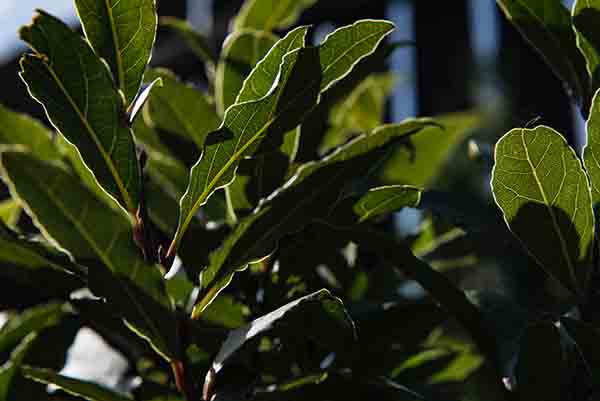WHAT IS BAY LEAF
Bay leaves, often referred to as bay laurel or sweet bay, are produced by the woody shrub Laurus nobilis, which is indigenous to the Mediterranean region.
They are renowned for their delicate flavour and aroma, which are a result of their essential oils. As they get older, they develop more taste, and steam and heat are used to extract that flavour.
When added to a slow-cooking preparation, such as a soup or stew, the leaves, which can be bitter to bite into, give the food a rich, herbal, woodsy flavour and scent.
The leaves of the evergreen English or cherry laurel plant resemble those of the bay laurel. The two plants, however, are very unlike, and the latter could be poisonous if consumed.
Oval and measuring approximately 3 inches (7.6 cm) long, culinary bay leaves. They have deep veins and margins that are both smooth and wavy. Fresh bay leaves are glossy and dark green; withered ones take on a more olive hue.
CAN U EAT BAY LEAF?
When I was younger, I clearly recall being told not to eat a bay leaf. They were thought to be extremely toxic, making them harmful to consume. I eventually came to the conclusion that this was the reason folks used a whole bay leaf when cooking and then removed it from the stew or soup just before serving.
ARE BAY LEAVES SAFE FOR CONSUMPTION?
Eating bay leaves is NOT harmful. Although it is a very widespread misconception, this one is untrue. This story is thought to have originated because mountain laurel and cherry laurel leaves, which resemble bay leaves remarkably, are deadly to both people and animals.
With that said, we still advise you to remove the bay leaf from your stew after it has been prepared. The bay leaf’s function in your soup is to simmer and release flavour and scent. The bay leaf, however, continues to be quite tight and stiff even after boiling for hours. If you swallow a large piece, you might scratch your digestive tract or, less frequently, you might choke.
On the other hand, don’t skip adding the bay leaf to your subsequent batch of soup, stew, chilli, or stock because you don’t want to have to fish it out. The addition of the bay leaf will undoubtedly give each bite a lovely, richer finish.
WHY YOU SHOULD REMOVE BAY LEAVES AFTER COOKING?
It’s interesting to note that lab research on bay leaves essential oils has revealed that they may be toxic to several dangerous infections, including specific types of bacteria and fungus.
They are, however, quite safe to use in cooking and are not poisonous to humans. Due to their antibacterial qualities and other health advantages, they have also long been employed in traditional medicine.
They are technically edible. However, cooking doesn’t make their extremely stiff and leathery leaves softer, and their edges can even be jagged.
So, if swallowed, they could pose a choking hazard.
In addition, cases of a bay leaf perforating the intestines and getting trapped in the throat or oesophagus have been made.
Although you can smash them, the texture will probably remain gritty. The majority of recipes advise using them whole and taking off the bay leaves before serving the meal because of this.
It may be better to spit out a bay leaf if you forget and unintentionally try to consume a complete or sizable chunk of it.
CONCLUSION
Curiously, laboratory research on the essential oils in bay leaves has shown This Mediterranean herb, sometimes known as bay leaves, bay laurel, or sweet laurel, is frequently used in soups, stews, and braised meats.
Before eating, it is advised that you remove the entire leaves or leaf fragments. But it’s not because they are poisonous; rather, it’s because they can cause choking.
Put the herb in a tea infuser or create a bouquet garni with bay leaves and other fresh herbs if you’re concerned about unintentionally ingesting one because doing so makes them easier to remove.
Related articles

Leave a Reply